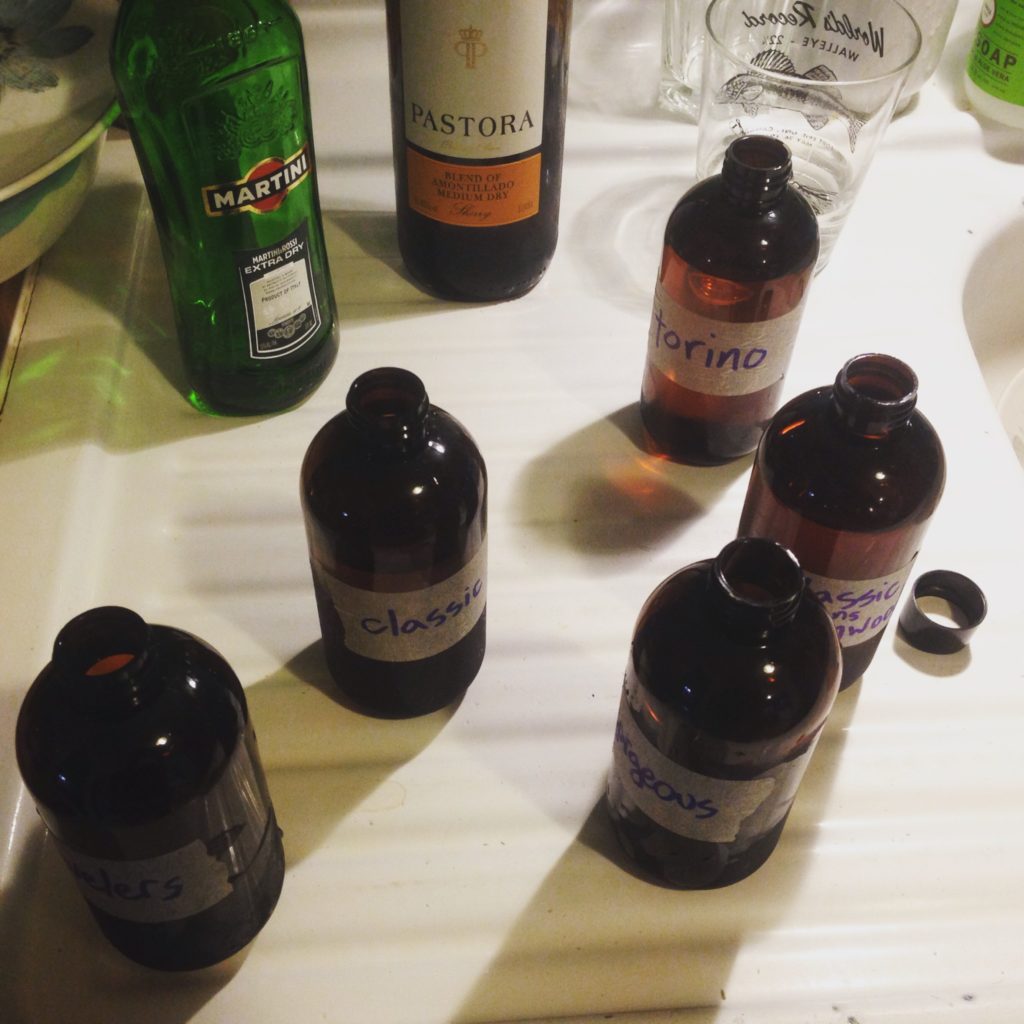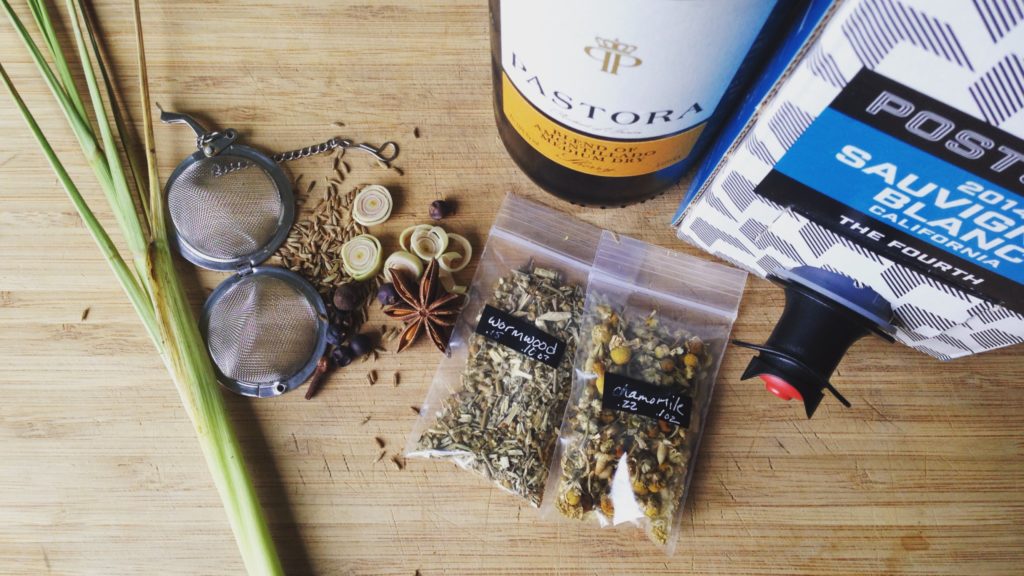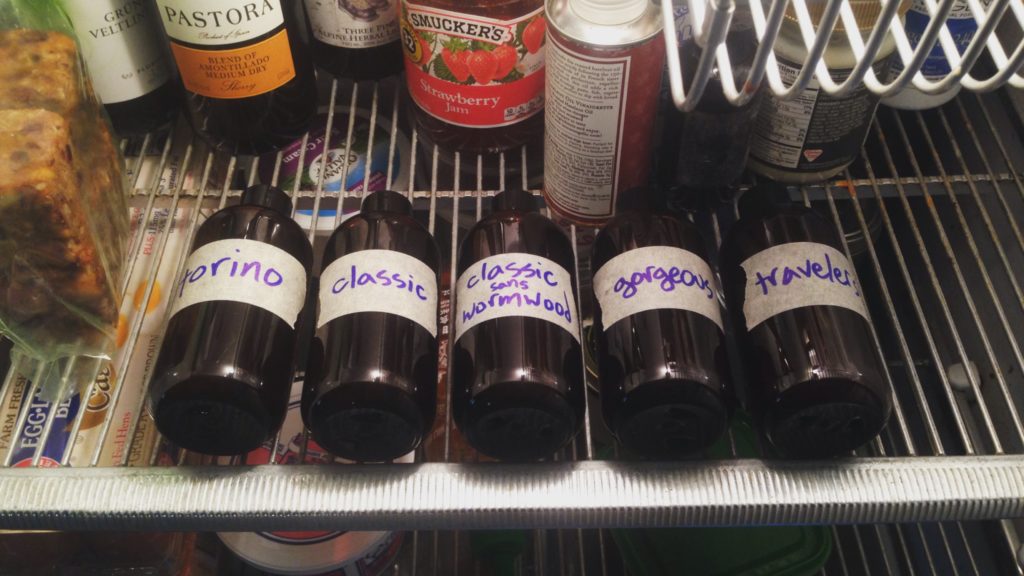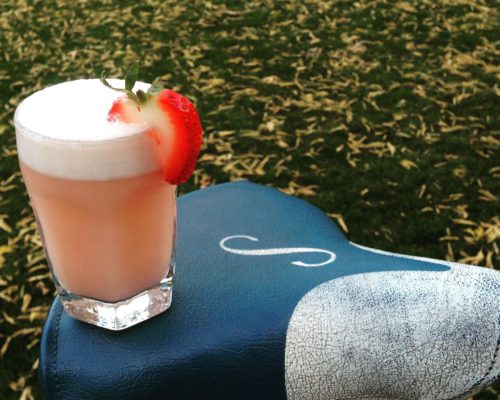Vermouth exists at an intersection of inevitabilities.
You need it to mix a martini (or Manhattan). You will obtain it at a grocery or liquor store, from one of two companies, in one of two countries.1 When you’re done dosing it into your gin (or bourbon), it will sit sadly in the liquor cabinet gathering dust. You are likely to wonder how long it will last there2. You are less likely to wonder what it is, how it’s made, or whether you might be able to make something better.


But just maybe, as that martini (or Manhattan) begins to lift you up into a flight of fanciful ambition, you will pick up the green (or red) bottle. You will turn it over in your hands, read the back label, and begin to wonder. Well, I’ve read all the labels, so let me save you the trouble: if there’s anything there besides a message from the surgeon general, it will be vague romantic copy about a secret nineteenth century recipe. That’s no help, and no surprise—Misters Martini and Rossi prefer you not escape the inevitability that is their brand. But I do, and this might.
Spiced spiked wine
Wine is nice and all, but sometimes you want to spice it up a bit. At least, that’s what the Portuguese, Spaniards, Frenchmen, and Italians3 thought. They came up with two strategies: fortification (adding booze) and aromatization (steeping herbs). Use either, and you have any number of unique regional beverages. Use both, and you just made vermouth.4
Neither fortified
nor aromatized
Wine, straight up
Only
Fortified
Sherry, Port, Madeira
Only
Aromatized
Both fortified
and aromatized
Vermouth!
Steeping and spiking: if these are skills you possess, vermouth is at your fingertips. Here’s what it comes down to:
Add 1/4 as much sherry.
Or 1/8 as much liqueur.
Or 1/16 as much hard stuff.

Steeping Subtleties
If you haven’t heard of “wine tea”, you’ll be forgiven. It’s not a thing. (Yet?) But consider the conceit: it simply means infusing herbs and spices into wine, as you would when making tea. And thinking of it this way encodes answers to many of the procedural intricacies:
| As with tea… | …so with vermouth |
|---|---|
| How? | Use any sort of tea infuser, or steep directly and strain. |
| How much? | About a teabag-ful (or tablespoon) per cup. |
| How hot? | Not-quite-boiling is ideal. |
| How long? | A few minutes. |
| What kind? | Tea tastes like tea because water tastes like nothing. Similarly, the lighter the wine (whether white or red) the more your aromatics will come through. |
| What else? | Sugar is optional. If that’s what you’re going for, adding it directly (cubes, honey) is just one option: you could also use a sweeter wine or sherry. |
Don’t memorize any of this. The above details are presented purely to convince you to trust your tea-making intuitions. There remains, though, one key question: which herbs or spices should you infuse?
The short answer: whatever you think sounds delicious5. Up to, and including, simply dropping in your favorite off-the-shelf herbal tea bag. Seriously. Why not piggyback on their herb-blending efforts and your own de facto taste-testing results?
For the long answer, read on.
First-order flavoring
You’re probably familiar with two types of vermouth. As most recipes call for these—and as bottled baselines are readily available—aiming for something similar is a reasonable goal. Here, for the purpose of potential imitation, is how they’re generally characterized:
Dry vermouth
Martini
Green bottle
Dry
Herbs (and spices)
Clear or straw-colored
French
Sweet vermouth
Manhattan
Red bottle
Sweet
Spices (and herbs)
Light red
Italian
Second-order styling
A broader survey of vermouths yields a wider variety of styles. In particular, two of the key variables—color and sweetness—are not universally correlated.6 Rather, they form a 2×2 matrix of possibilities:
Dry White
Typical “dry” vermouth
Traditionally French
Labeled “dry” or “extra-dry”
e.g. Noilly Prat Original Dry, Dolin Dry
Sweet White
“Bianco” (Italian)
or “Blanc” (French)
e.g. Cinzano Bianco
Dry Red
While there’s little evidence for this type of vermouth as a distinct historical or commercial category7, there’s no reason it wouldn’t be wonderful. Who’s up for the challenge?
Sweet Red
Typical “sweet” vermouth
Traditionally Italian
Technically “Vermouth di Torino”
Labeled “sweet” or “rosso”
e.g. Martini & Rossi Rosso

Nth-order improvisation
Even the above matrix of red/white and sweet/dry styles is a simplification. As demonstrated by the many the styles6 on the market, vermouth-makers never have and do not now conform to any strict stylistic rules. Which is precisely why the ‘short answer’ above holds true: by simply improvising towards your own ideas of deliciousness, you’ll be following in that great tradition of Mediterranean steepers and spikers. Heck, you don’t even need to succeed—if your brew is indeed delectable, all it may require is rocks. But if not, fear not: yours is not the first palate-puckering concoction, and it may well find its niche as a martini rinse or among (or in place of) bitter amari. Among the variables you might play with:
Color/Wine
White
Red
Rosé
Sweetness
Dry
Steeped (sugar, honey, maple)
Spiked (cream sherry, liqueurs)
Bitterness
Wormwood
Gentian
Dandelion
Herbaceousness
Chamomile
Mint
Fennel
Fuitiness
Orange peel
Hibiscus
Dried fruit
Spiciness
Cinnamon
Star anise
Cardamom
Join the Virtual Potluck
They say you taste first with the eyes, and if you've given this recipe a go, we'd all love a visual nibble. What aggressive improvisation did you apply? Did it succeed brilliantly or fail spectacularly? To show off your marvel (or mess), dust off your smartphone:


